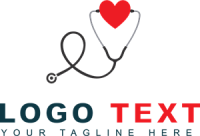Henry Hargrove Review of Emergency Care Programs
We learn you real good
We learn you real good
Emergency Care Programs on Homestead near Ave U is one of the few private EMT Basic classes in the NYC area. With branches closer to Queens and the Bronx, the acceptable pricing can get you towards that goal of becoming a certified Emergency Medical Technician but, statistically, it s going to take work. Comprised of high school graduates, kids recently done with college, 40-60 hour a week working stiffs, and seasoned people looking for a career change, the seemingly harmless and straightforward curriculum can quickly chew you up and devour your money if you fail to put up the effort. Think of the directions, syllabus, and exams as all tests of your maturity. Can you correctly fill out the admission paperwork? Can you make a doctor s appointment on your own and ensure you have the right vaccinations? Can you find the time to read the book and take notes on what is important and glance over the menial details? Will you study, just a little, for the straightforward but baby MCAT style questions? One of the more vicious but understandable policies ECP has is that failure at a milestone is failure of the course, which you can take again for a slight discount. And boy did people drop out at every milestone. Milestones, in general, are:
1. CPR exam and practical
2. Small exams averaging a 70 overall
3. Failure to do the emergency room practical (8-12 hours of your own time, on a single day)
4. Final exam meeting at least a 70 and averaging 70 overall
The curriculum is interesting and covers a huge array of topics. Reading the book is essential to confidently pass and not all material is summarized in the power point slides or lecture. Speaking of which, Fred was the primary lecturer and has been a mainstay of the NYC community for many years. Sure his jokes are corny, he is a little bit crazy, and he fits (and laughs about) the Jewish stereotype to a T. Occasionally he lacks the professionalism expected at the collegiate or business level but he does teach in an excellent manner: no matter the level of your initial understanding, his many years of experience allows him to transform the information into a way you can understand and no willing student will be left behind. The downside is that the academically stronger kids might be a little bored but that s it; Fred can quickly ramp up the level of discussion to the doctoral level if the braniacs wanted to pick his brain. Other instructors, some still active EMTs, are a mixed bag but all bring a different perspective to the written in stone protocol. A caveat: as most emergency professionals will tell you, the book can t prepare you for all situations, instinct is important, but you must learn from the book. Whenever an instructor deviates from the book you should bring it up and look for agreement; if there is still a disagreement, take both sources with a grain of salt. The largest downfall to ECP is the less than optimal training aides. It s almost a fly by night operation, tucked into the basement of a Yeshiva. There are frequent audio visual issues, CPR dummies are not pristine, suction machines are dinosaurs and barely work. Given the throughput of ECP and how much emphasis there is on practical learning it is not surprising that they don t have the newest and fanciest stuff. Another large downside is that ECP does not arrange for ambulance rides due to student issues in the past and so you will complete EMT certification without having ever stepped into an ambulance. The upside to this is that almost every EMT group has their own indoctrination process to get you familiar with their gear and local protocols.
In short, Emergency Care Programs EMT B class is an adult learning program with flare-ups of child tantrums and JV team antics but is a vital step in the process that will teach you something you didn t know.

Comments: